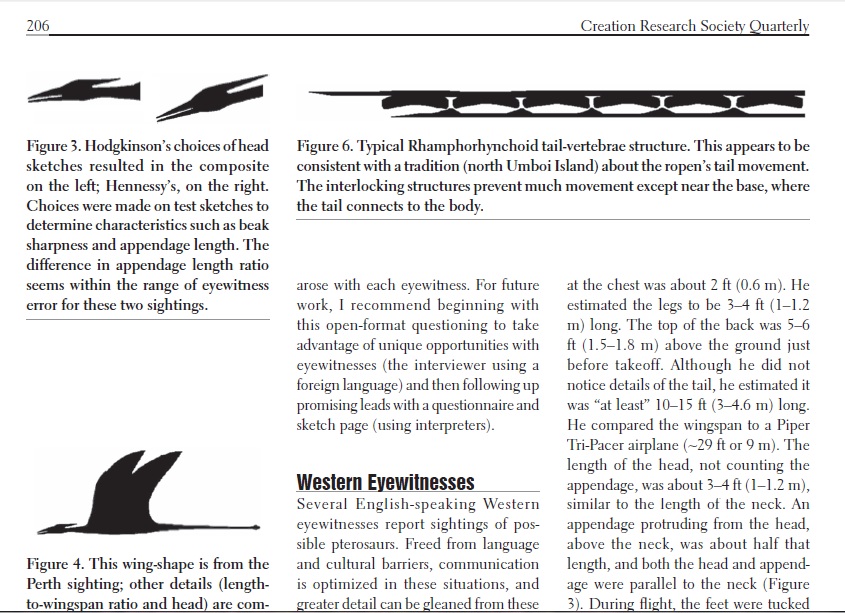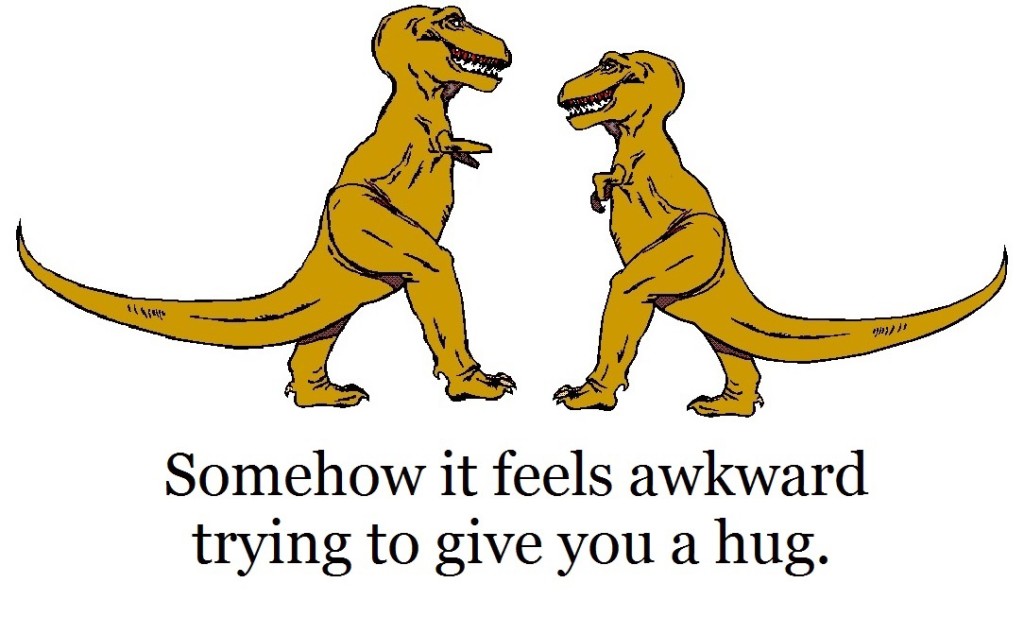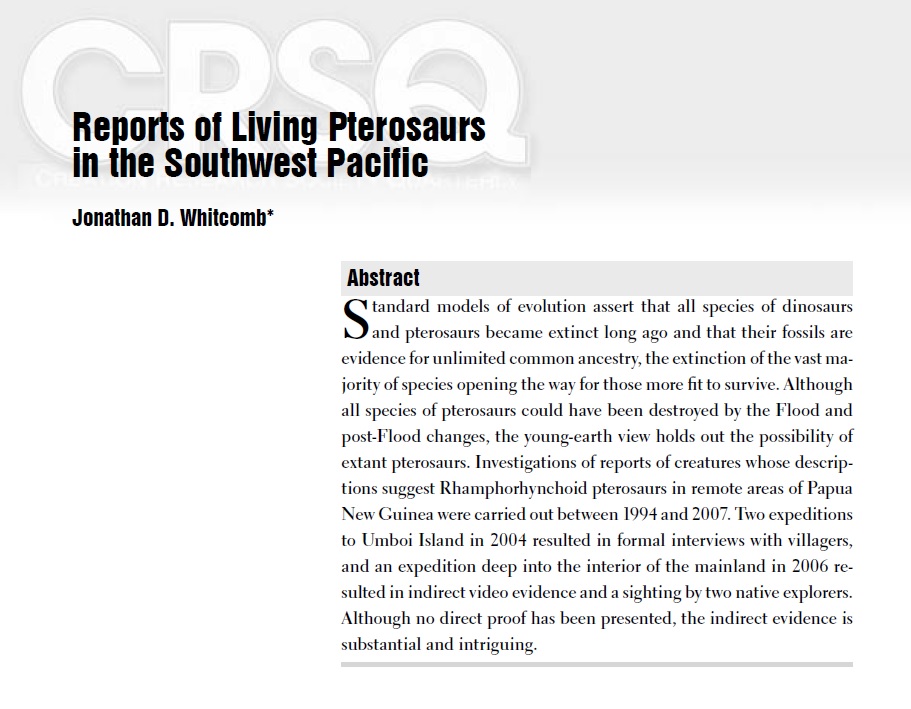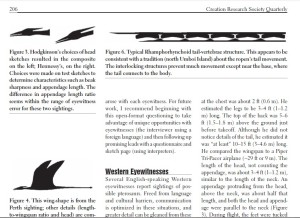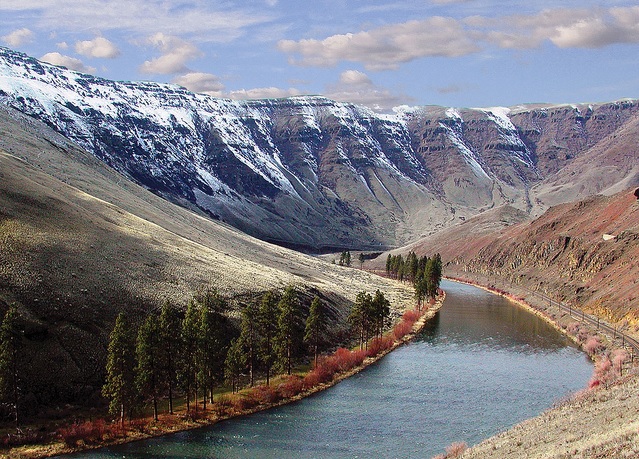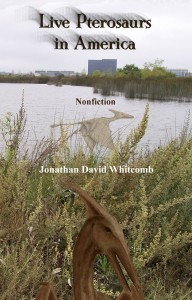What is a Rhamphorhynchoid, also called a basal pterosaur? A definition by a non-scientist could be “a long-tailed pterodactyl.” Why believe that the cryptid called ropen is a modern version of that kind of pterosaur? It’s not just the long tail on a reportedly featherless flying creature. Sighting reports of apparent “pterodactyls” often have a description of the end of the tail, and a common word used is “diamond.”
In truth, “science” has never proven that all species of pterosaurs became extinct millions of years ago. Let’s look at a few excerpts from two scientific papers about reports of modern pterosaurs.
Scientific Paper by Jonathan Whitcomb
Standard models of evolution assert that all species of dinosaurs and pterosaurs became extinct long ago and that their fossils are evidence for unlimited common ancestry, the extinction of the vast majority of species opening the way for those more fit to survive. . . . [but] investigations of reports of creatures whose descriptions suggest Rhamphorhynchoid pterosaurs in remote areas of Papua New Guinea were carried out between 1994 and 2007. . . .
The search for living pterosaurs is cryptozoological. Cryptozoology is the study of “hidden” or “unclassified” zoological species or possible species, especially in the early discovery stages. A number of expeditions in recent years have collected and analyzed eyewitness testimony, primarily in Papua New Guinea . . .
Jonah Jim and Jonathan Ragu, both [natives] of Umboi, made separate sightings in different areas of Umboi. However, both described a glowing, flying creature. When shown many illustrated silhouettes of birds, bats, and pterosaurs, both chose the Sordes Pilosus, a Rhamphorhynchoid pterosaur as best fitting what they had seen (Woetzel-Guessman expedition).
From the scientific paper “Reports of Living Pterosaurs in the Southwest Pacific”
.
Scientific Paper by David Woetzel
Over the years Biblical scholars have speculated about the nature of the creature described in the Authorized Version as “the fiery flying serpent.” . . . recent cryptozoological research provides new insights into the identification and characteristics of this creature. Moreover interviews and personal observations from a 2004 expedition that I led to Papua New Guinea convinced me that a fiery flying serpent still survives on a remote island there. . . .
Described as a nocturnal creature, the Ropen possesses two leathery wings like a bat with “hands” on each wing, a long tail with a diamond-shaped flange on the end, and a prominent beak. The creature is thought to still inhabit the islands of New Britain and Umboi, located in the Bismarck Archipelago.
###
.
What is a ropen? A modern flying dragon? Could it be a misidentified flying fox fruit bat? True science requires we be specific: Ask a specific question that gets to a critical point.
A Long-Tailed Rhamphorhynchoid
What are the flying creatures called “ropens” on Umboi Island? . . . The following compilations of many eyewitness testimonies are taken in the context of a few of the second-hand accounts, with conclusions by Jonathan David Whitcomb.
Destination Truth Ropen Episode
Josh Gates leads an expedition team into a jungle in Papua New Guinea, as they search for evidence for a modern pterodactyl.
Ropen Bioluminescence in New Guinea
Let’s compare the words of four witnesses: three natives on Umboi Island and one British biologist on the mainland of New Guinea. Each describes flying lights: on two sides of Umboi and on the mainland to the west of Umboi.
Brian Hennessy Sighting of a Ropen
He said that no feathers were discerned by him but he could not be sure: It may have had feathers that he could not distinguish under the conditions of his sighting.
.



